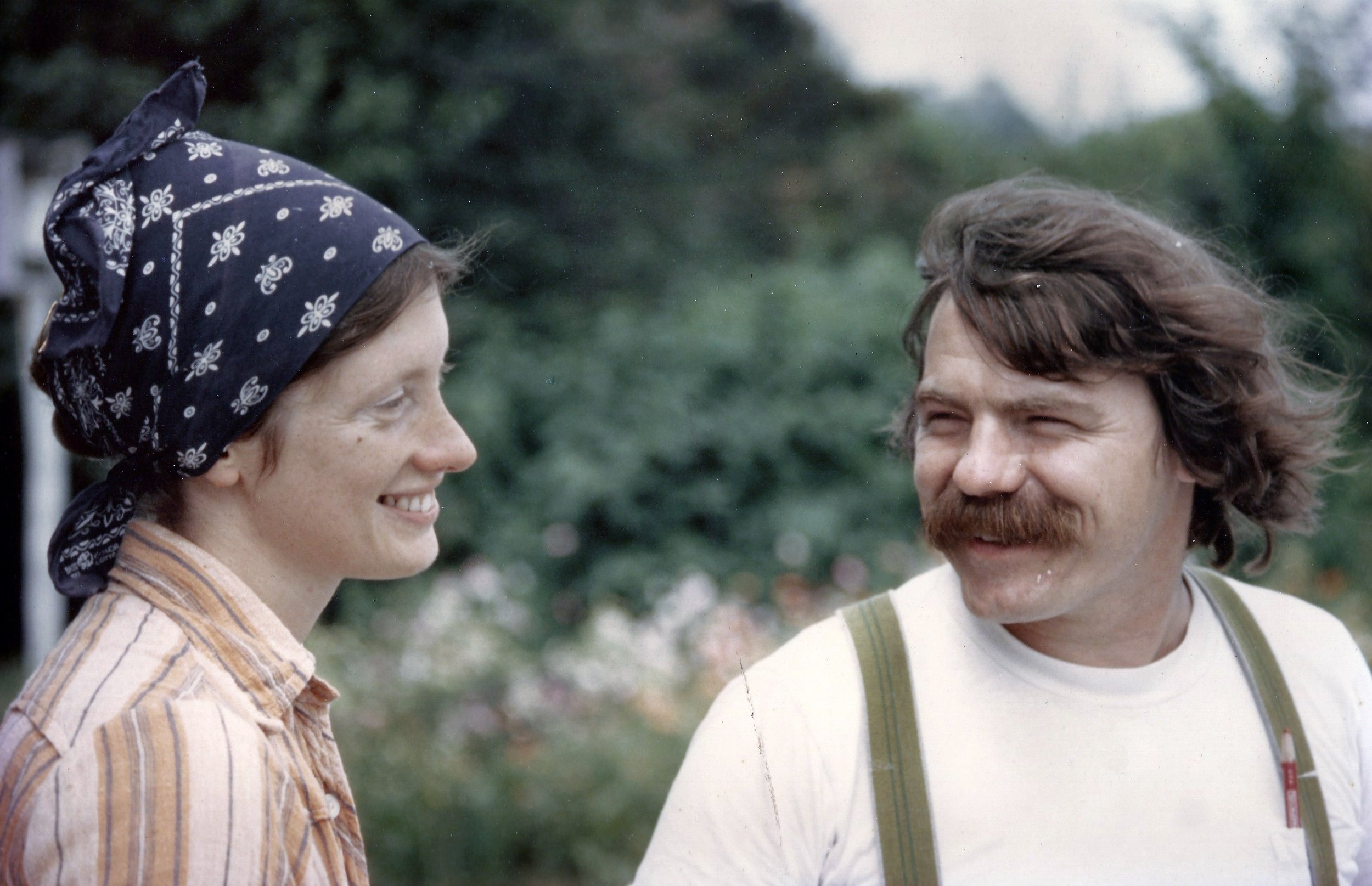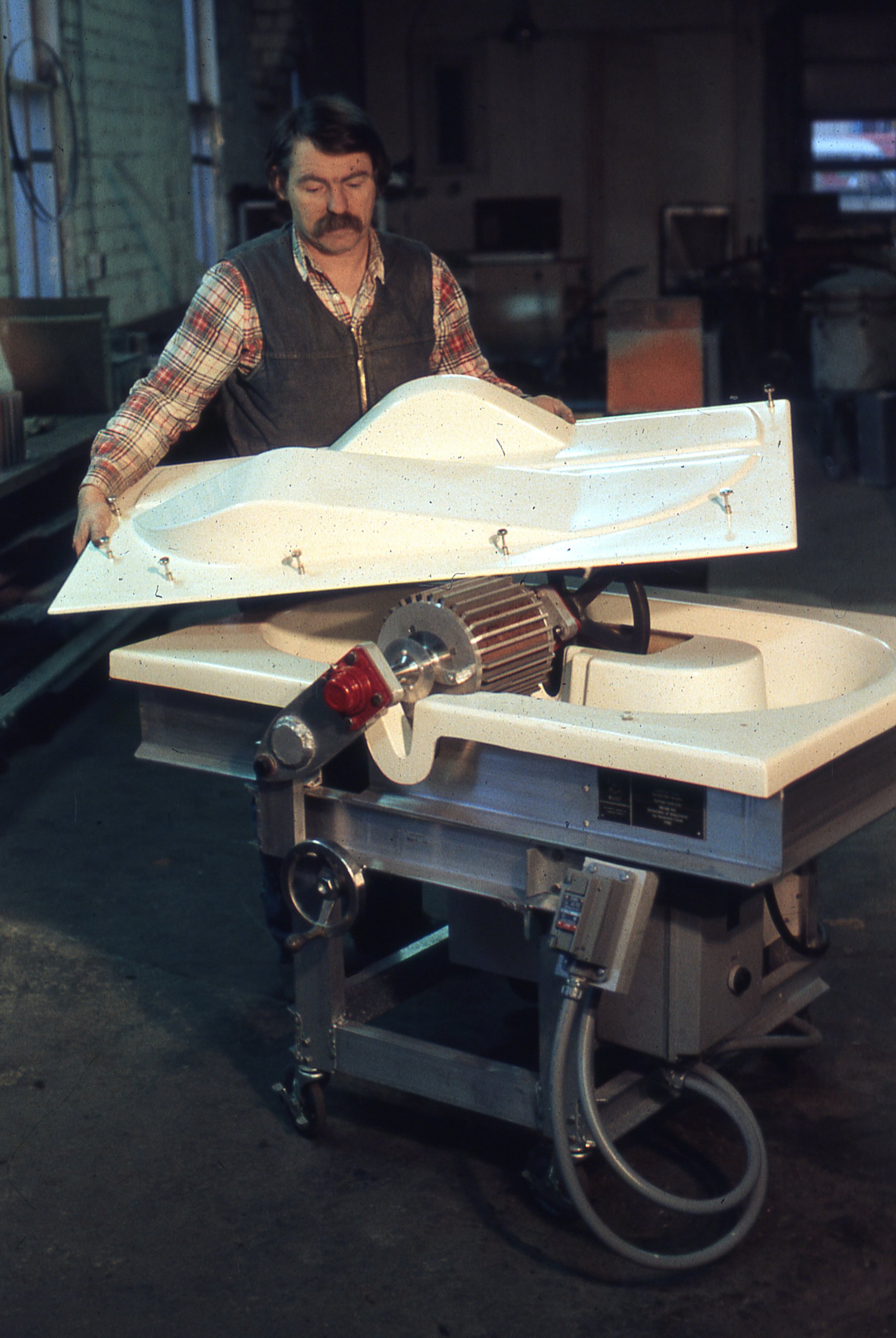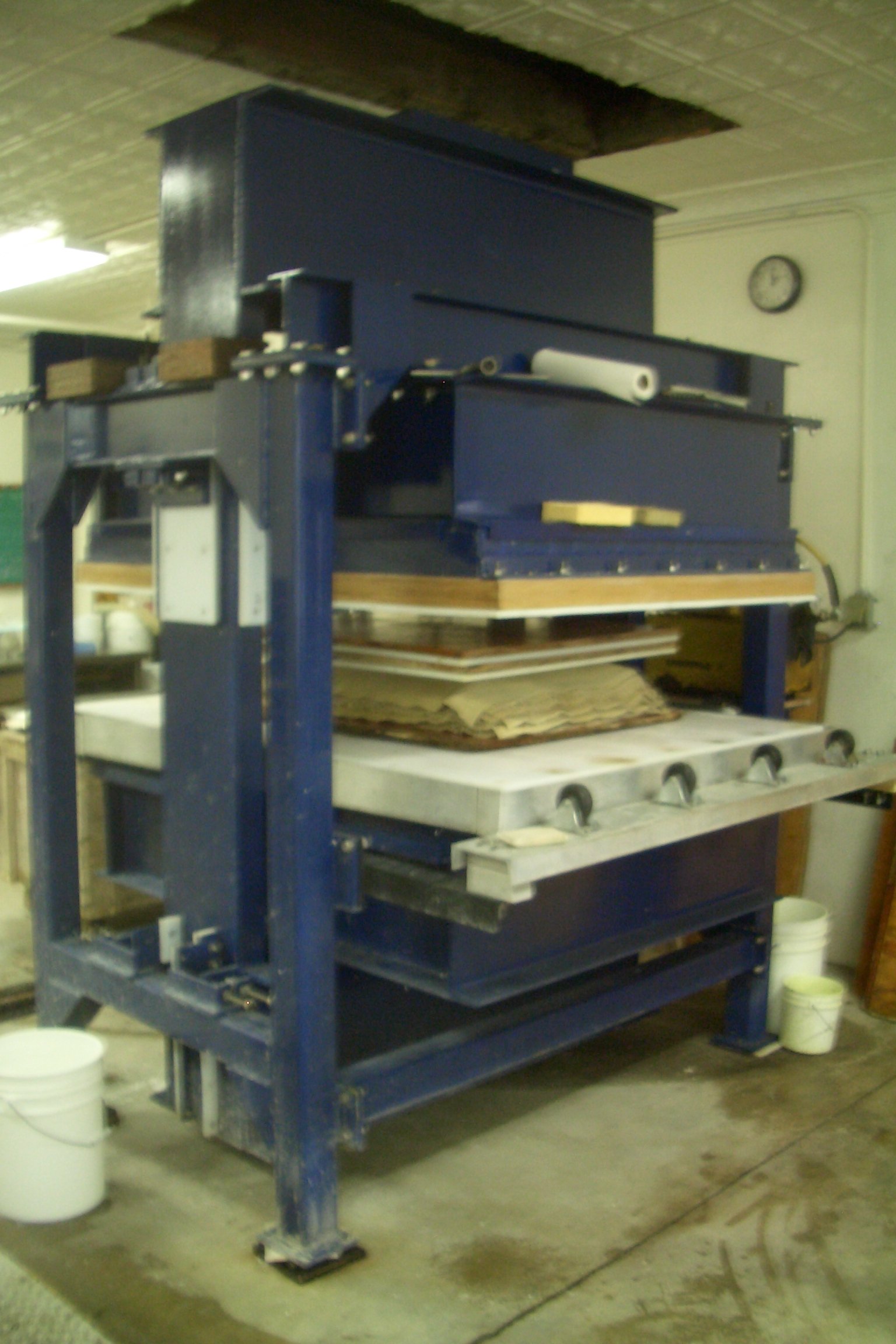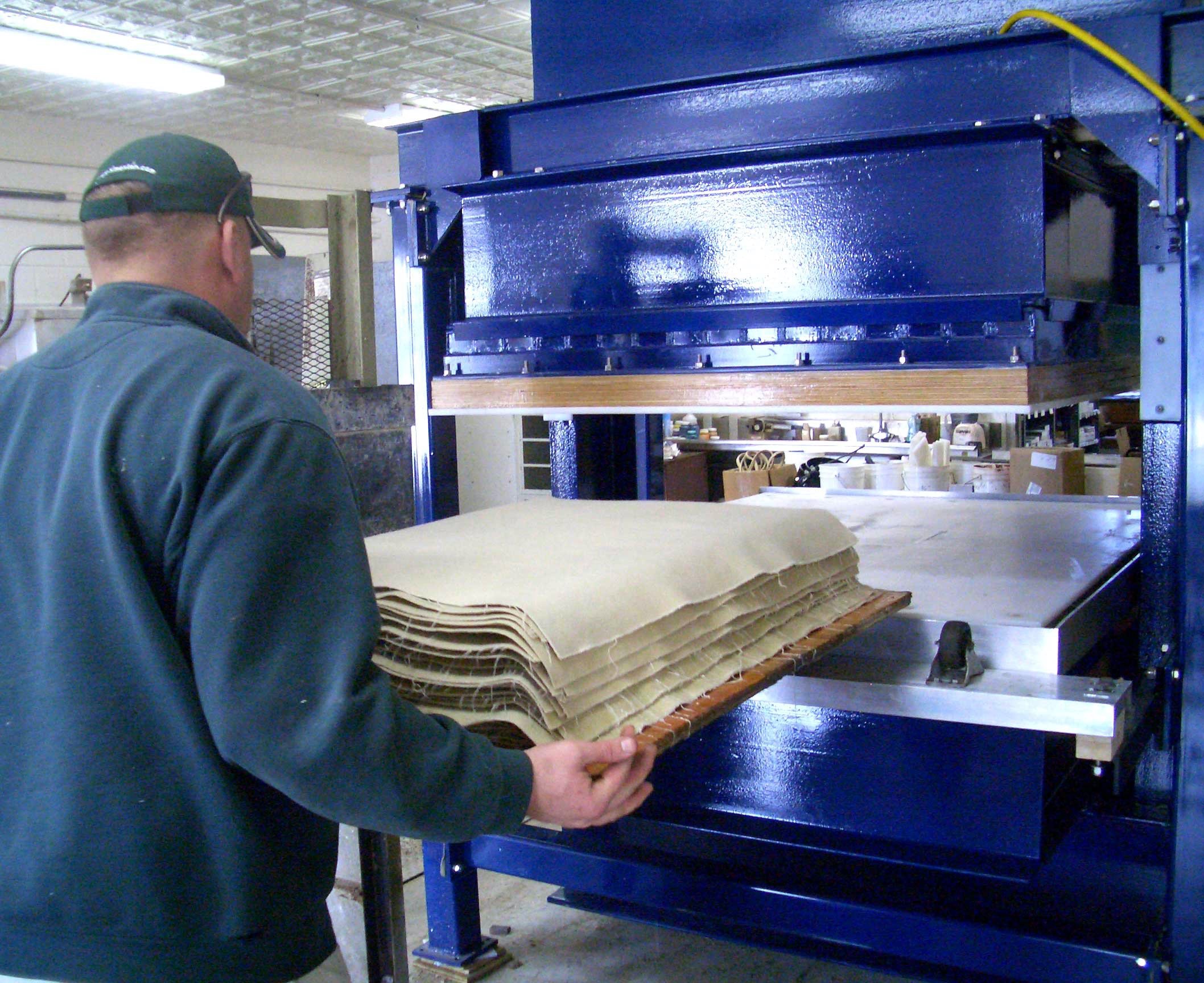
KATHRYN & HOWARD CLARK
PAPERMAKING CHAMPIONS
Kathryn and Howard Clark are recognized as NAHP Champions for their crucial roles in establishing and developing Twinrocker Handmade Paper, Inc. between 1971 and their retirement in 2008. Under their leadership, Twinrocker produced paper for some of the world’s best-known artists and highly respected fine art print studios, adding significantly to the visibility and professional stature of the papermaking field. The Clarks effectively multiplied their impact many times over during their careers by training 16 younger papermakers, many of whom went on to make additional important contributions to the papermaking field.
Kathryn & Howard Clark
Essay by Bernie Vinzani
There was a curious combination of energies that merged in Detroit in 1968 when two Indiana Hoosiers met and began a relationship that married their many talents into what would become a cornerstone in the resurgence of hand papermaking in this country and a leading branch in the family tree of papermakers.
Howard Clark, a graduate of Purdue University’s School of Mechanical Engineering, was studying industrial design at Wayne State University when he met Kathryn Haugh, a printmaking student in the art department at the school. Kathryn’s teacher was Aris Koutroulis, a Tamarind master printer, who introduced her to papermaking, having learned the basics from Lawrence Barker at Cranbrook. Howard, a creative inventor at heart, wanted a future for himself where he could design his ideas, build them, and make them work. After they completed school, a change was in the air, so they left the motor city on their honeymoon in a two door Morgan roadster and headed to San Francisco.
In the counterculture atmosphere of the 1960’s, what followed was a creative open door where anything was possible. Because of Kathryn’s training in lithography from Aris, she applied and was hired by Collector’s Press, where she became the first and only woman lithographer working in a professional workshop at that time. Printing editions with Tamarind-trained printers brought into focus every aspect of fine art lithography, and Kathryn began to expand the limited range of paper that was used. A pivotal moment came when master printer Ernest deSoto suggested to Kathryn that making paper for specific print projects, in a specialized papermaking workshop, could be sustainable.
Listening to the advice of many fine book printers helped set a high standard of quality for the paper Howard and Kathryn aspired to make. After much research, Howard began building a Hollander beater. In time, with the help of Kathryn’s twin sister Margaret and her husband Kit Kuehnle, they began making paper in the garage of a house they rented. Kathryn tested their early sheets at Collector’s Press and eventually they made paper for Cuevas Comedies, a suite of images by the artist José Luis Cuevas that Kathryn printed. In what evolved to be one of the hallmarks of Kathryn’s expertise as a collaborator with the many artists she later influenced, handmade paper became a new editioning medium. The watermark for their paper of a back-to-back rocking chair derived from Kathryn’s printer’s chop of a “k” on top of a “c,” announced the beginning of Twinrocker on April Fool’s Day, 1971.
After much encouragement by people in the Bay Area to continue making paper, and after the death of Howard’s father, the commitment to continue meant a move to the Clark family farm in Indiana, where they landed in 1972. The Clark homestead stood among corn and soybean fields on a country road near the town of Brookston. The farm’s matriarch, Howard’s grandmother, Inez, lived in the farmhouse and the move back eased her chores. Upon the farmland where the work ethic of generations was visible, construction began on the first commercial hand paper mill in the United States since Dard Hunter’s Lime Rock mill in 1929. It all made sense. The atmosphere of the farm and the work ethic needed to succeed became a driving force for Howard, Kathryn, and their apprentices, a force necessary to hone the skills needed to make the finest sheets of handmade paper. A total of twelve apprentices, two at a time, arrived every two years to work in the mill. The harmony, hardships, challenges, and successes in the early days contributed to the legacy of Twinrocker that exists today.
Astonishingly, the quality of handmade paper Kathryn and Howard made, without formal training and without ever visiting a functioning hand mill, was remarkable. It depended on trial and error, accurate observation of processes within the shop, reading many historical accounts of papermaking, and asking the right questions of others, especially those in the paper industry. Kathryn’s attention to detail as an edition printmaker and Howard’s mechanical acuity were crucial elements in the learning curve. Also, at work was Kathryn and Howard’s openness to connect the dots in many peripheral topics, knowing that new ideas would spring from that process.
As they learned, new challenges were taken on: training the apprentices, each trying to fulfill their own needs; making large paper using two papermakers dipping together in unison; drying paper flat, a necessary quality for paper used by lithographers; perfecting the techniques of making pulp editions (first seen in Claire Van Vliet’s Janus Press book publications of Aura and Midi); meeting the technical requirements of making conservation paper for the repair of books and documents; and perfecting surface-sized watercolor paper that is now known as some of the best ever made. In one of their most memorable challenges, the team made a laminated order for Robert Motherwell in 1974 that became a day and night marathon because the artist had been hospitalized and publisher Ken Tyler was afraid Motherwell would die. When the artist survived, Twinrocker wound up in a dead rush in the hope that he might live long enough to sign the finished pieces, which, to everyone’s relief, he did.
Along with the papermaking activities in the mill, Twinrocker began selling supplies to budding papermakers, many of whom were introduced to the craft during occasional workshops taught at the mill or at schools and institutions across the country. Howard also formed Twinrocker Equipment, hand crafting over forty Hollander beaters and fifty aluminum presses for artists and schools. The mill, now located in downtown Brookston in a much-needed enlarged space, adds its charm to the town.
The well-known documented accomplishments of Howard and Kathryn can best be appreciated in David McGowan's Academy Award nominated short documentary film, The Mark of the Maker. It maps the development of Twinrocker and follows the many advancements in the craft that came from the mill. As the title implies, the beauty of something handmade contains the mark of the maker, and with it there is a link from the past to the present and to those yet to come.
The expertise of Kathryn and Howard and their enduring commitment to handmade paper has contributed widely to the expansion of the craft. The guidance they gave to the apprentices who worked with them was filled with encouragement and possibilities, and many continue today as papermakers, researchers, artists, and teachers. Howard and Kathryn, now retired, have entrusted long-time papermaker Travis Becker to carry Twinrocker into the future. Howard and Kathryn Clark are two treasures whose influence continues to impact the world of hand papermaking in America today.

Become an NAHP Member
Join our vibrant hand papermaking community and access your membership benefits.




















